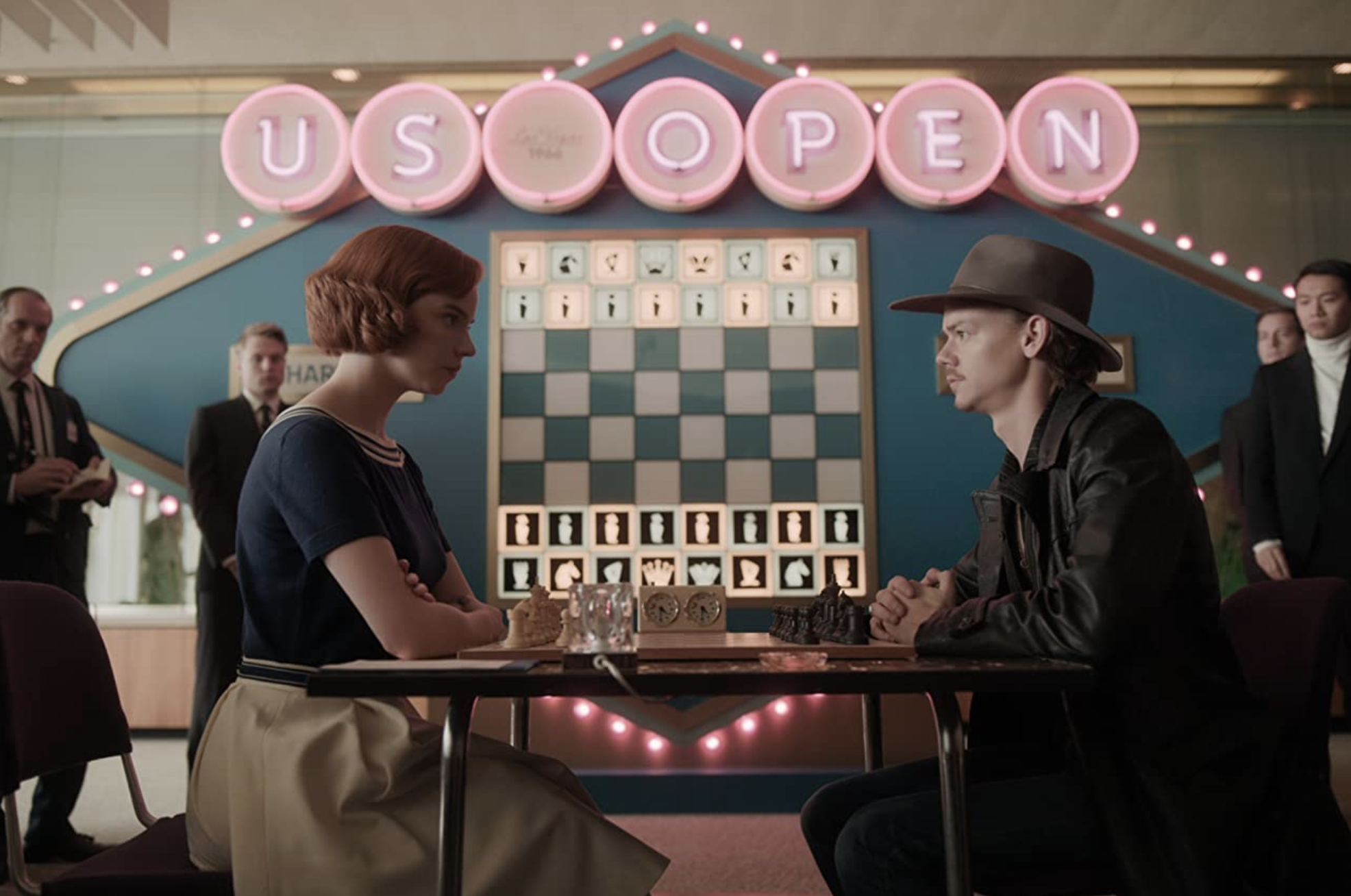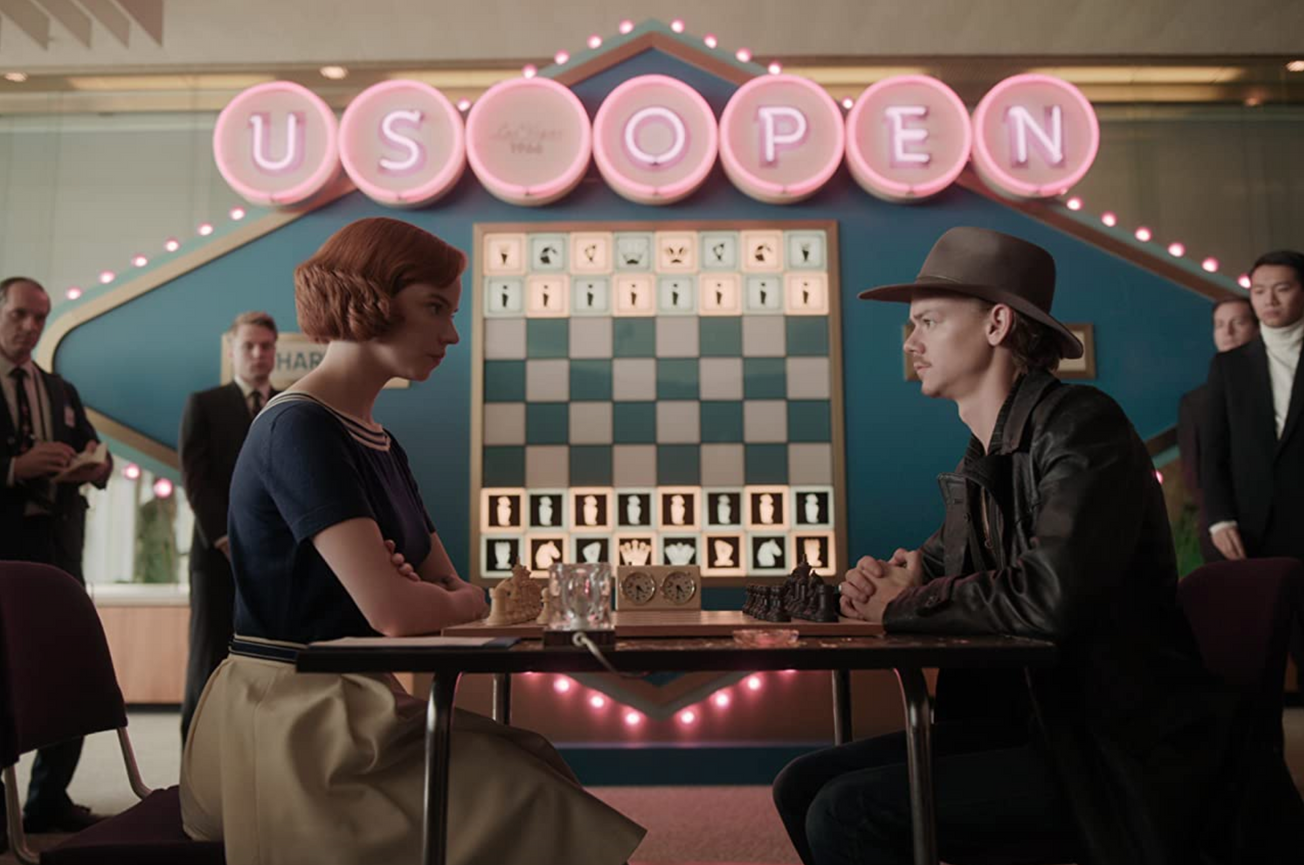By Marta Macedo, Third Year, Film and Television
Chess has never been more seductive than in Netflix’s newest miniseries The Queen’s Gambit, based on Walter Tevis’ 1983 novel of the same title. Even if at times uninspired and tonally confused, Scott Frank and Alan Scott’s drama gives the audience a cool, sharp and ultimately delightful performance by Anya Taylor-Joy as the series’ protagonist, Beth Harmon.
Over the seven hour-long episodes that comprise it, the show follows Beth’s life and evolution as a chess player, from the age of eight until she’s twenty-two. After being taught the game by a janitor at her orphanage, Beth’s life becomes a laser-focused quest to become a Grandmaster – apart from World Champion, the highest title a chess player can ever hope to obtain.

In this classic child prodigy story that rarely dares to take any chances, the pull for the spectators is Harmon’s mania: the voyeuristic view into a gifted mind. Stories of unparalleled genius have often dazzled audiences and even though her development as a character is hindered by the show’s stale dialogue and predictable storylines, Beth warms her way into the viewers’ hearts through her smug, self-possessed persona. Ever elegant and distant, only furthered by her impeccable timing, Taylor-Joy’s portrayal of Harmon’s obsession, condescension and self-assurance registers as one of the only truly refreshing elements in the show’s diluted aesthetic.
Though the show features several visually innovative sequences – striking mainly for how out of the place they look – it’s Beth’s uncompromised femininity that takes the lead. In a world saturated with men, her dresses set her even further apart. Condemned for looking too ‘glamorous’ for the chess universe, Harmon never lets that deter her from pursuing victory after victory. It’s in this refusal to ‘man her up’, a refusal to force her to conform to certain rules that The Queen’s Gambit impresses. Rather than hiding the woman in Harmon, the series celebrates her – in fur coats, luxurious capes and twirling skirts.
Taylor-Joy’s portrayal of Harmon’s obsession, condescension and self-assurance registers as one of the only truly refreshing elements in the show’s diluted aesthetic
As we watch her grow up, Beth’s life becomes a whirlwind of tournaments and opponents but, rather than taking the time to explore them, the show only flirts with deeper and more complex themes surrounding addiction and unhealthy coping mechanisms. All the chaos and turmoil end up feeling washed out, reduced to a couple of interestingly lit scenes that will vanish from our memories as soon as they’re done.

'On The Rocks' is another case of style over substance for director Sofia Coppola
'Rebecca' is half disjointed adaptation, half a clumsy erotica
Leaving aside the fact that the show does virtually nothing new during its runtime, it can occasionally be a pretty fun watch. Even if most of the comedy registers as incidental, Beth’s dynamics with the various opponents-turned-friends-over-the-years add an extra layer to the character, grounding her personality within the social context of the 60s. Rivals at first, close allies after she’s defeated every single one of them, these secondary characters guide her through the last few years of her chess career. Though she may be cold and detached at times, they’re a constant in her world, always there with an ego-boosting speech ready at the drop of a hat to lift her morale back up again.
With a strong foundation of perseverance and eventual success, The Queen’s Gambit fails only in its reliance on generic tropes and overdone symbolism.
Featured: IMDb
Have you been watching The Queen's Gambit?
Epigram Film & TV / Twitter / Instagram








